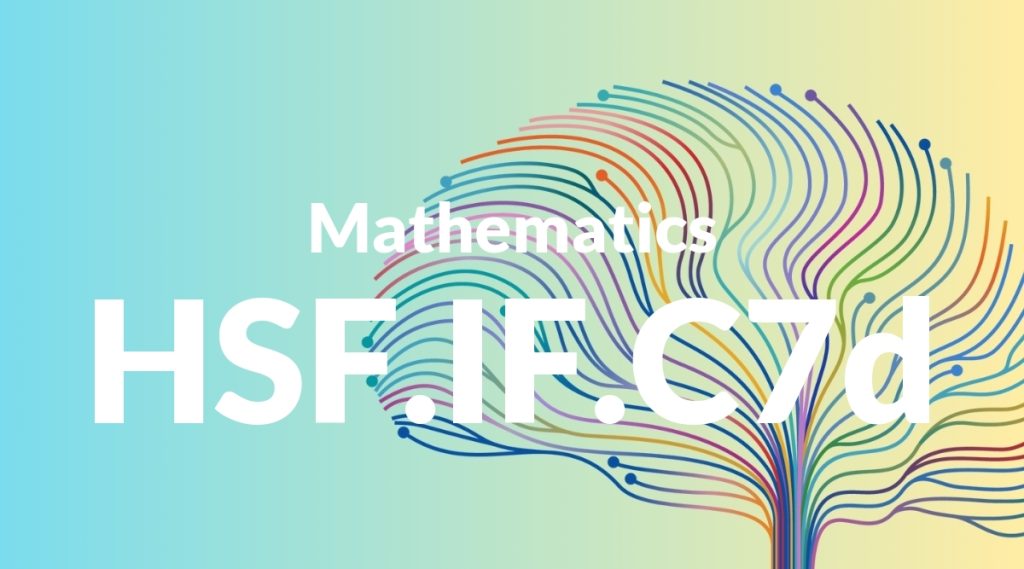Standard: HSF.IF.C7 – Graph functions expressed symbolically and show key features of the graph, by hand in simple cases and using technology for more complicated cases.*
Grade level: High School: Functions
Subject: Mathematics
Domain: Interpreting Functions
Teacher Overview
This standard focuses on the ability to graph functions that are expressed symbolically and to identify key features of these graphs. This skill is crucial as it allows students to visualize and interpret mathematical relationships, which is a foundational skill in higher-level mathematics and many real-world applications. Students should be comfortable with basic algebra and graphing. They should understand how to solve equations and inequalities and be familiar with different types of functions. This foundational knowledge will help them grasp the concept of graphing symbolic functions.
Mastering this standard prepares students for more advanced topics in mathematics, such as transformations of functions, calculus, and real-world problem-solving scenarios where interpreting and graphing functions are essential.
Common Misconception 1
A common misconception is that all functions are linear. This is incorrect because functions can take many forms, such as quadratic, exponential, and logarithmic, each with distinct characteristics and graph shapes.
Intervention 1
To address this misconception, provide students with a variety of function types and have them graph each one. Discuss the differences and similarities in the graphs and highlight the unique features of each function type.
Common Misconception 2
Another misconception is that the graph of a function is always a straight line. This is incorrect because many functions, such as quadratics or exponentials, produce curves rather than straight lines.
Intervention 2
To remediate this, engage students in graphing activities that include a range of function types. Use graphing technology to show how different functions produce different graph shapes and discuss the significance of these shapes.
Prerequisite Knowledge
Students should have a solid understanding of basic algebra, including solving equations and inequalities, and familiarity with different types of functions (linear, quadratic, exponential). They should also be comfortable with graphing points and interpreting graphs.
Subsequent Knowledge
After mastering this standard, students will be able to analyze more complex functions, understand transformations of functions, and apply their graphing skills to real-world problems in calculus and other advanced math courses.
Instructional Activities
- Graphing a variety of functions by hand and using graphing calculators
- Analyzing real-world data sets and modeling them with appropriate functions
- Using graphing software to explore the effects of changing parameters in functions
- Collaborative group work where students create and present function graphs




